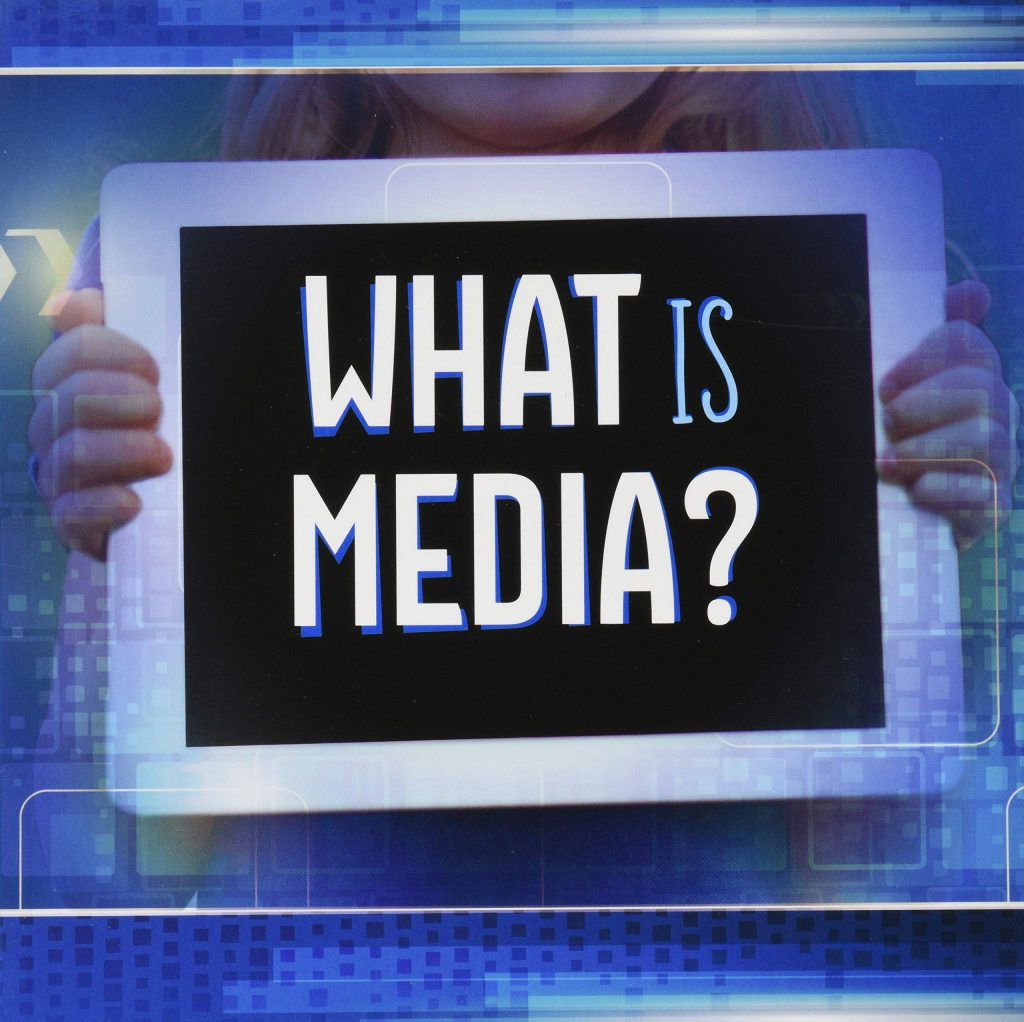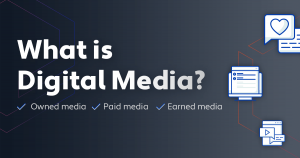What is Media? A Brief Definition and Meaning About Media

The word “medium” is pluralized to “media,” which (generally speaking) refers to any route of communication. This covers everything from printed paper to digital data and covers information in the forms of art, news, education, and a wide range of other things. A kind of media is anything that has the ability to reach or sway people, including telephones, television, and the Internet.
The term “media” in the context of informatics refers to both the tools used to store data (such as hard drives, CD-ROMs, diskettes, etc.) and the tools used to transport it (such as cables and wires) or even spread it in its various forms (videos, sounds, podcasts, etc.). The media are moving more and more toward this field’s digital side in the modern era.
All types of electronic communication that are sent across the globe via computer networks and fibre optic cables are considered modern digital media. The Internet and social media (Facebook, Twitter, Instagram, etc.) are two examples of contemporary media that have profoundly altered our world.
Media Explanation on Blogs Year
It’s common to view the history of media as a tautology, both ironically and seriously. For history to be preserved and transmitted over time, some sort of media must be used. The development of printing press technology led to several changes in Western civilization, ranging from the intellectual to the political and beyond.
Digital media sprang from twentieth-century technology, which in turn aided in the development of the internet. The construction of ARPANET, which foretold the rise of the internet and framed the contemporary digital media environment, was made possible by academic research as well as backing from the American military.
Today, a variety of media are available, however some have already become obsolete:
- Newspapers, journals, radio, television, magazines, and even billboards are examples of traditional media. Print media and broadcast media make up the two main subcategories of traditional media.
- Print media, which encompasses all printed paper publications like newspapers, magazines, books, reports, clinical journals, leaflets, essays, etc., is the oldest kind of media.
- At the start of the 20th century, broadcast media first appeared in the shape of radio and (later) television. Broadcast television is now beginning to lag behind as online media sources take over, much as the arrival of TV reduced the significance of radio as a way for people to obtain information in the form of news.
- Fiberoptic cable and computer networks are just two examples of the physical and virtual media that are used to convey the elaborately encoded signals that make up digital media, which represents an ever-growing fraction of modern communications. Modern digital media encompass the Internet as a whole, but on a more specific level, “media” refers to websites, blogs, podcasts, videos, digital radio stations, mobile phones, as well as the data transmission channels like instant messaging, video chats, and emails.
- In informatics, the phrase “computer media” is frequently used with a variety of connotations. Hard drives, USB drives, DVDs, CD-ROMs, and floppy discs are a few examples of the electronic data storage devices that are referred to as “storage devices.” It also refers to the cables, like as coaxial cables, fibre optic cables, and conventional electrical lines, that are used to connect workstations together (twisted-pair wires). More generally, the terms “media” and “multimedia” refer to any information-transmission methods, including presentations, images, sounds, and video (if they combine different types of media).
- All of the media outlets that can simultaneously reach a huge number of people are considered mass media. While digital mass media mostly refers to social media platforms and well-known online periodicals, traditional mass media also includes TV and radio channels as well as regional, national, and worldwide magazines. MMORPGs, for example, are some of the video games that some people think should be included (MMORPGs).
- Since social media platforms fall under both the mass media and digital media categories, they have already been mentioned. They are made up of websites and apps that individuals use on their computers or cellphones to exchange content instantly. They stand for a new technology that changed the last ten years by enabling global information sharing of almost any kind.

What are the different types of media?
News media (earned media)
To convey news to a target audience or the general public, news media uses components of mass media. Any writing about you or your business that you did not produce yourself or pay for falls under this category. For instance, rather than spending money on advertising, your business may secure a feature in Forbes. Earned media can take on many new forms in today’s environment, such as being included in a review (including negative ones on Yelp) or through a tweet about your company that was liked and retweeted.
Social media (shared media)
A website or app called social media enables users to easily and quickly generate and share material with the world. Because the meaning of it is continuously shifting, it is the “developing” media. The easiest way to define shared media is as social media posts about your brand on sites like Facebook, LinkedIn, Pinterest, Twitter, and Instagram. This is also recognised as the most economical PR platform.
online media
Web media is a type of online communication that combines text, audio, and visual elements. Web media includes things like graphics, photographs, and movies. Because you directly created it, it is stuff you own. Today’s most well-known owned content examples include podcasts, websites, blog entries, and videos. Owned media can also include content that was developed by your workers, provided that a contract was signed by both parties and the content was included.
Print media
This is the media that is still in existence today and that your parents were exposed to. Print media, which also goes by the names conventional and even “old-fashioned,” comprises books, comic books, periodicals, and newspapers. Print media are being utilised in conjunction with desktop publishing tools and electronic book reading devices like the Amazon Kindle.
Other forms of media
For more than 50 years, Americans have been captivated by television as a source of entertainment. TV channel selection was initially constrained, and viewers were required to watch shows at the times they were broadcast. You may now view a range of movies and television series on demand thanks to streaming apps. The earliest kind of entertainment is a movie, which you could only view in a theatre in the past. But thanks to modern technology, you can now stream or rent movies to view on your computer, phone, or television.
Since the 1980s, video games have been accessible for purchase. You may now virtually immerse yourself in a game thanks to lifelike graphics, fast CPUs, and incredibly accurate simulations. Video games are a terrific approach to learn how to connect with a certain audience. The media actively promotes video games, which are marketed to particular demographics. A company can develop a video game product with a message aimed at broad demographics.





